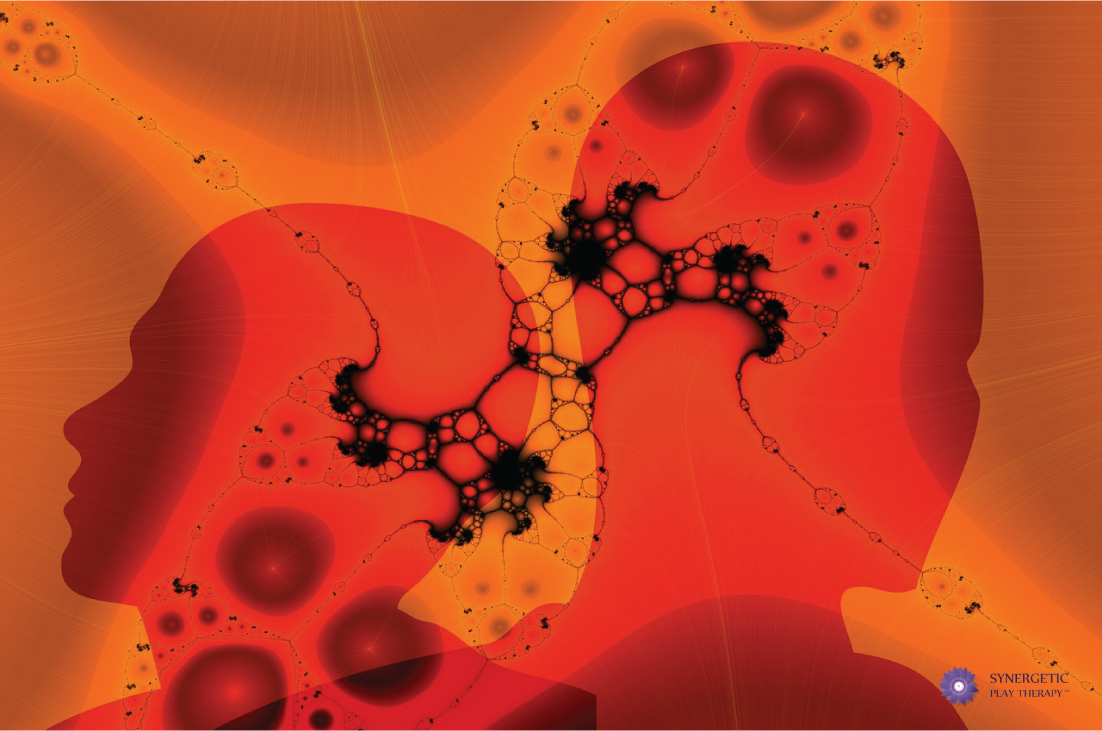Balancing the Left Brain & the Right Brain in Play Therapy
By Lisa Dion, LPC, RPT-S
Play therapy is very much a right-brain experience. When a child is playing, their right brain is actively engaged, and the sensations and emotions stored in their implicit memory circuitry have the opportunity to arise into conscious awareness. This is the magic of play. It allows children to explore their internal world without having to access words.
I have observed that this can be highly confusing for therapists attempting to facilitate the play process, as they are being asked to be “in” an experience without necessarily understanding the experience. What children explore through their play is their perception of themselves and the events that have happened in their life; these often arise in the room as feelings, thoughts and sensations, and not the literal details of an event (although that sometimes happens, too). What this means is that therapists can approximate the “felt sense” of what it was or is like for the child, but it’s really hard to accurately understand the details of what occurred. Therapists are really working with the “felt sense” that arises in the right-brain experience in the playroom.
This often leaves therapists scratching their heads, wondering how to communicate what the child is working on with their parents, teachers and other adults involved in the child’s life. Left-brain processes are extremely helpful in facilitating this communication! In regards to left-brain processes, I mean the ways to organize and make sense of what is happening. Finding ways to make meaning out of a right-brain felt experience is crucial to being able to translate what is happening in the playroom effectively and keep parents engaged in the process.
Some of the left-brain processes that, in my opinion, are instrumental include goal setting, strategies for tracking what is happening in the play and tools to help explain the play therapy process in a more logical way to parents to keep them engaged. These left-brain processes are some of the areas where I see many play therapists struggle because many therapists love to stay in the creative, right-brain experience. When play therapists don’t engage left-brain processes, they often get lost along the way, not knowing where they are in the process. Feeling lost makes it very challenging for therapists to communicate with parents and teachers effectively. As a result, these parents and teachers may find themselves feeling discouraged, as they are not able to clearly see the progress and transformation that is occurring.
The reality is that the world functions more in a left-brain way, which means we need to translate and help people outside of the playroom understand what is happening for the child in a left-brain type of process.
Here are a few things that therapists can do:
- Make sure to set clear goals that are age appropriate, and clearly outline what you and the parent are looking for to know that change is occurring. Ex. Stephen (age five) will increase his ability to use his words when he gets frustrated. This will be demonstrated when instead of hitting when he gets frustrated, he asks for help.
- Every time you communicate with the parents, make sure you are helping them understand how the play is working towards the outlined goals. This needs to happen in every conversation.
- Use visual handouts to help explain the process to parents. For example, in Synergetic Play Therapy we show parents a diagram of what the play therapy process looks like during the intake. This is a great way to make a right-brain experience feel more concrete for parents, which creates a deeper level of understanding and buy-in from the parent.
- When you explain concepts to parents, give them a handout so that they can review it later.
- Early on in the play therapy process, make sure that you identify what the challenges are for the child and also identify what exactly you are looking for to indicate that progress is occurring. This will help you track progress. Also, make sure to document these changes in your notes. For example: If you identify that your child client’s play is filled with feelings and play demonstrating a perception of lack of safety and a need to stay hypervigilant, then you will most likely be looking for play that involves safety and predictability to let you know that a transformation has occurred. Knowing this at the beginning of the play therapy process sets you up to know exactly what you are looking for and can help you get excited when you begin to see even small shifts in the play.
Interested in credits and courses delivered to your living room? Take a look at all our classes, available on our learning site.






